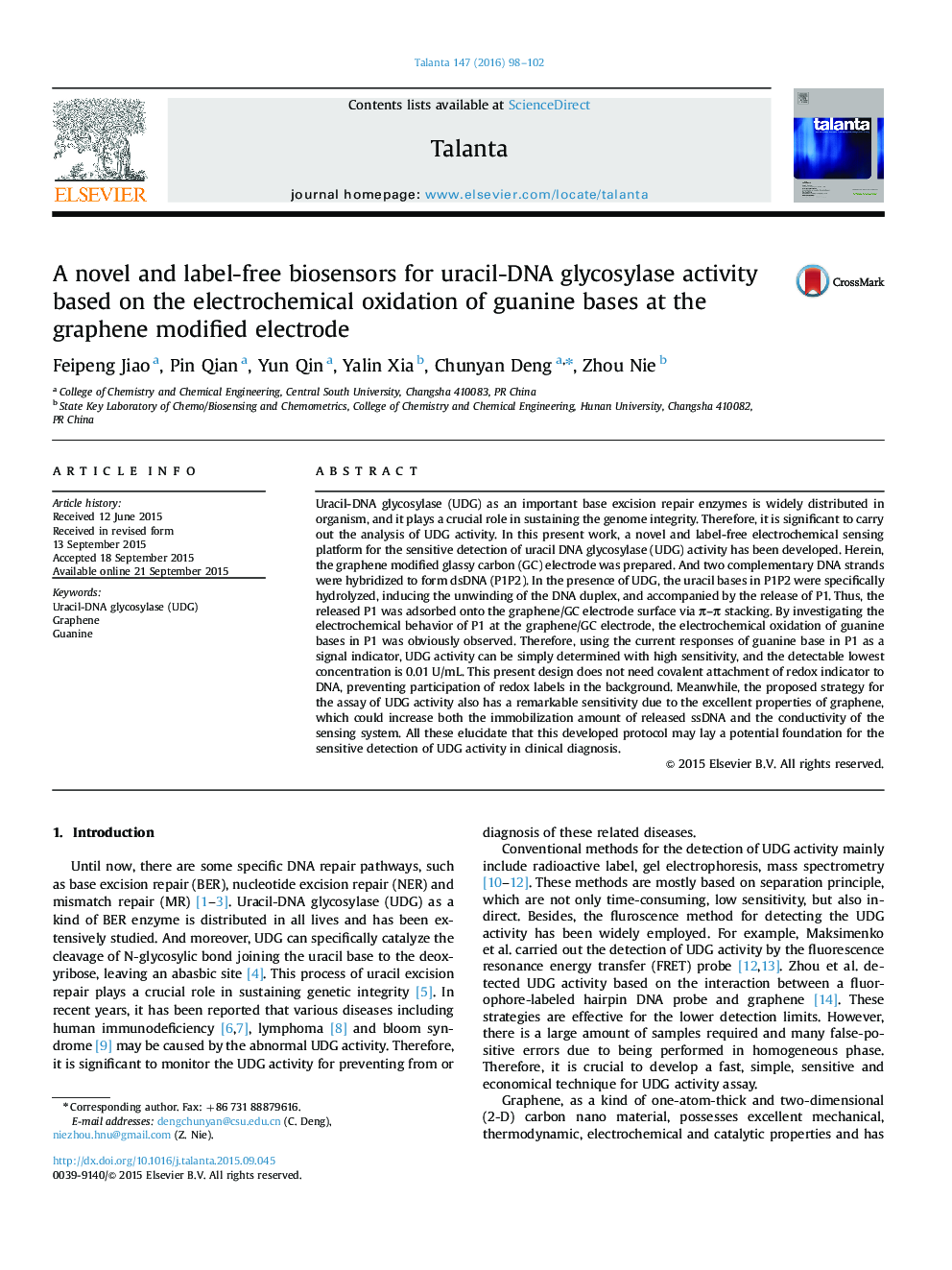| کد مقاله | کد نشریه | سال انتشار | مقاله انگلیسی | نسخه تمام متن |
|---|---|---|---|---|
| 1242730 | 1495788 | 2016 | 5 صفحه PDF | دانلود رایگان |
• A novel biosensor for sensing uracil DNA glycosylase activity was developed.
• The current responses of guanine bases in released ssDNA was as a signal indicator.
• The electrochemical oxidation of guanine bases was greatly enhanced by graphene.
• The label-free design did not need covalent attachment of redox indicator to DNA.
• The UDG activity was simply determined with high sensitivity.
Uracil-DNA glycosylase (UDG) as an important base excision repair enzymes is widely distributed in organism, and it plays a crucial role in sustaining the genome integrity. Therefore, it is significant to carry out the analysis of UDG activity. In this present work, a novel and label-free electrochemical sensing platform for the sensitive detection of uracil DNA glycosylase (UDG) activity has been developed. Herein, the graphene modified glassy carbon (GC) electrode was prepared. And two complementary DNA strands were hybridized to form dsDNA (P1P2). In the presence of UDG, the uracil bases in P1P2 were specifically hydrolyzed, inducing the unwinding of the DNA duplex, and accompanied by the release of P1. Thus, the released P1 was adsorbed onto the graphene/GC electrode surface via π–π stacking. By investigating the electrochemical behavior of P1 at the graphene/GC electrode, the electrochemical oxidation of guanine bases in P1 was obviously observed. Therefore, using the current responses of guanine base in P1 as a signal indicator, UDG activity can be simply determined with high sensitivity, and the detectable lowest concentration is 0.01 U/mL. This present design does not need covalent attachment of redox indicator to DNA, preventing participation of redox labels in the background. Meanwhile, the proposed strategy for the assay of UDG activity also has a remarkable sensitivity due to the excellent properties of graphene, which could increase both the immobilization amount of released ssDNA and the conductivity of the sensing system. All these elucidate that this developed protocol may lay a potential foundation for the sensitive detection of UDG activity in clinical diagnosis.
Schematic representation of the electrochemical assay of UDG activity using the graphene modified GC electrode.Figure optionsDownload as PowerPoint slide
Journal: Talanta - Volume 147, 15 January 2016, Pages 98–102
